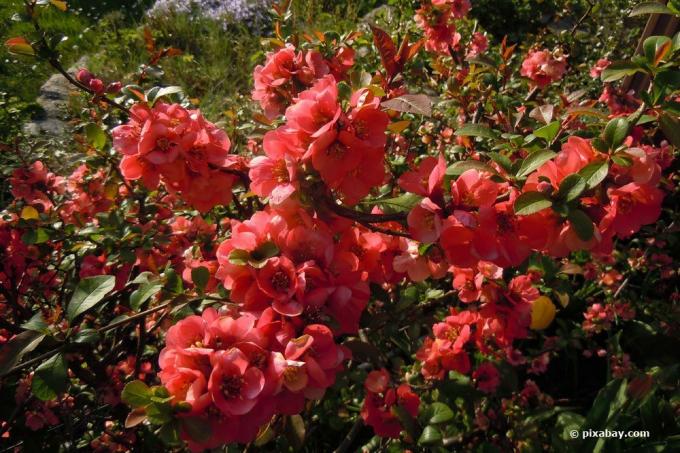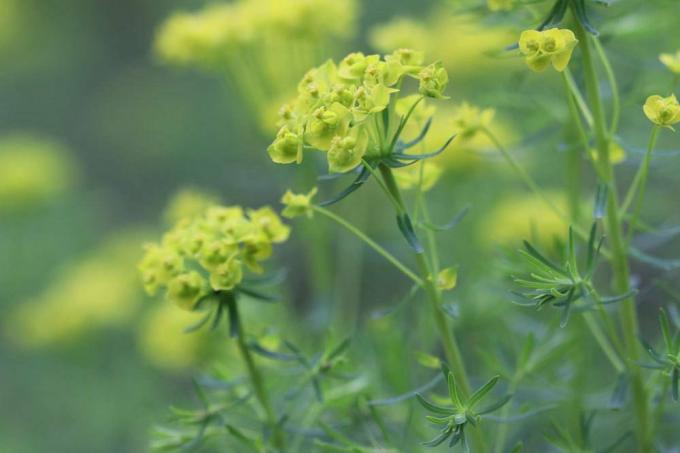
table of contents
- criteria
- Low-maintenance ground cover
- Ground cover from D - K
- Ground cover from P - Z
- Colorful accents on the embankment
- Perennials from B - G
- Perennials from K - V
- Bushes and trees on the slope
- Bushes from B - G
- Shrubs from R - Z
Planting a garden can be an exciting and exciting undertaking. Or just a job that needs to be done. It's up to you what you make of it then. If the garden or part of it is on a slope, the task is a little more difficult and interesting, but can be managed well with a little planning. Ideally, you choose the planting so that you can cope with the subsequent care without much effort.
criteria
What criteria do I use to choose hillside planting?
Before you buy the first plants for your slope, don't just think about them Make future care, but also about which plants feel comfortable there and thrive there can. Perhaps the hillside planting should also solve a problem at the same time. In addition, every garden owner has different preferences. Some important questions when planning are:
- How steep is the slope?
- Is the embankment fortified or should it also be fortified by planting it?
- Is the slope in the sun or in the shade?
- Should the planting also serve as a privacy screen?
- Do you prefer certain colors or plants for this?
tip: The steeper a slope, the more important it is to have good paving. Plant at the beginning Ground coverthat take root quickly and well in order to keep soil erosion within limits.
Low-maintenance ground cover
the Ground cover fulfill two functions. They prevent soil erosion, as they cover your entire slope over time and thus strengthen it. But at the same time they give little room to wild herbs. This eliminates weeding entirely or at least keeps it within manageable limits and your bed is easy to care for.
Ground cover from D - K
Fat man
- Synonyms: Japanese ysander, shadow green
- botanical name: Pachysandra terminalis
- Growth height: up to 30 cm
- preferred location: partially shaded to shady
- Flower: small, white or pink
- Flowering period: from February
- Leaves: roughly toothed, leathery
- Special features: evergreen, poisonous, spreads quickly, therefore well suited for the first planting of a slope
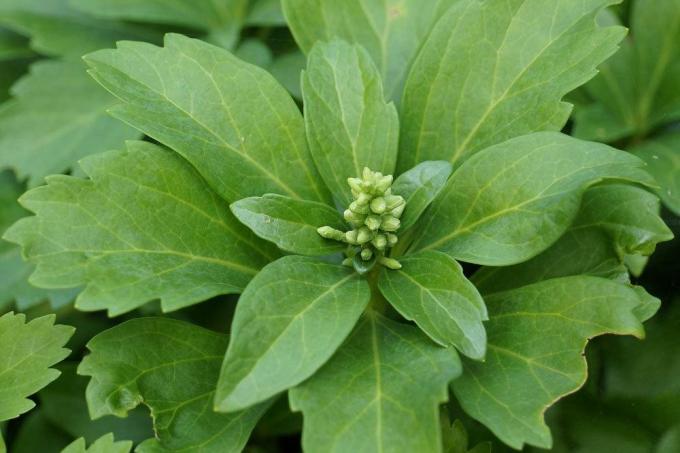
Little evergreen
- Synonyms: small-leaved periwinkle
- botanical name: Vinca minor
- Height: about 10 to 30 cm
- preferred location: sunny to partially shaded
- Flower: white, blue or purple
- Flowering period: April to May and August to September
- Leaves: elliptical
- Special features: grows rather slowly, evergreen, flowers twice a year, also tolerates shade, but flowers and grows less abundantly there
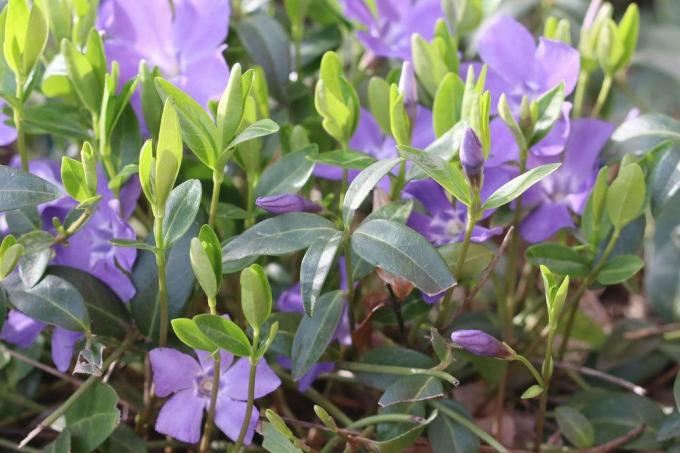
Crawler
- Synonym: climbing spindle bush
- botanical name: Eunymus fortunei
- Growth height: depending on the species 10 cm to about 10 m
- preferred location: partially shaded to shady
- Flower: about 5 mm in diameter, white to greenish
- Flowering period: June to July
- Leaves: green, elliptical, pointed, serrate
- Special features: evergreen climbing plant with adhesive roots, therefore suitable for planting slopes and walls
Ground cover from P - Z
Peony violets
- botanical name: viola sororia
- Growth height: up to about 15 cm
- preferred location: partially shaded to shady, likes to be slightly moist
- Flower: mostly light blue, but also white possible
- Flowering period: March to June
- Leaves: heart-shaped, finely to woolly hairy
- Special features: very robust, dense growth, moves in in winter

Carpet St. John's Wort
- botanical name: Hypericum calycinum
- Height: approx. 30 cm
- preferred location: sunny to partially shaded
- Flower: golden yellow
- Flowering period: June to August
- Leaves: grass green, evergreen
- Special features: particularly easy to care for, tolerates drought very well, strong urge to spread
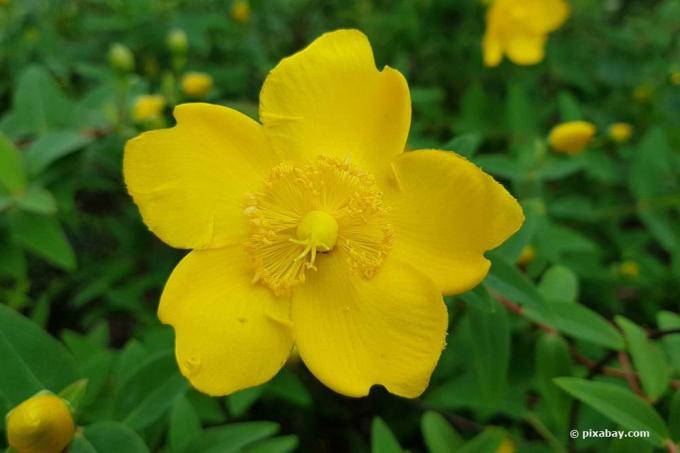
Cotoneaster
- Synonym: loquat
- botanical name: Cotoneaster praecox
- Height: approx. 15 to 20 cm for creeping species, 10 m possible for other species
- preferred location:
- Flower: white to pink
- Flowering period: from May
- Leaves: small, glossy dark green
- Special features: spreads very quickly, small yellow or red fruits, popular winter food for birds, flowers attract insects but slightly toxic to humans

Cypress Spurge
- botanical name: Euphorbia cyparissias
- Height: approx. 15 to a maximum of 40 cm
- preferred location: sunny and dry
- Flower: lemon yellow
- Flowering period: April to June
- Leaves: needle-shaped, 2 to 3 cm long, yellow-green to blue-green
- Special features: Plant sap is poisonous, spreads very strongly, but does not need pruning, popular insect and bee pasture, intense honey scent
Colorful accents on the embankment
With different Perennials you can set colored accents in your hanging bed. If you like it colorful, then choose plants with different flower colors. Limit yourself to three to four colors, otherwise the bed will quickly look restless or chaotic. Tone-on-tone plantings, on the other hand, have a harmonious and calming effect on the viewer. Attention should also be paid to simple maintenance and similar location and maintenance requirements.
Perennials from B - G
Colorful vetch
- Synonym: poison vetch
- botanical name: Coronilla varia
- Height: 30 to 80 cm
- preferred location: preferably sunny
- Flowers: purple-red, umbels of up to 20 individual flowers
- Flowering period: June to August
- Leaves: short stalked, imparipinnate
- Special features: unfortunately poisonous, enriches the soil with nitrogen

Real bedstraw
- Synonyms: Liebkraut, yellow forest straw
- botanical name: Galium verum
- Height: 20 to 70 cm
- preferred location: like dry
- Flower: yellow in different intensities from lemon to golden yellow
- Flowering period: July to September
- Leaves: furrowed, needle-shaped
- Special features: intense honey scent, is edible, branched and long roots
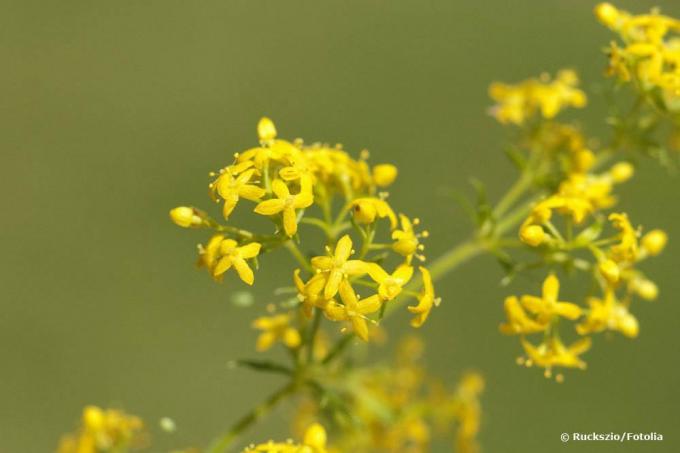
Ordinary sun hat
- Synonym: Luminous sun hat
- botanical name: Rudbeckia fulgida
- Height: 60 cm to 1 m
- preferred location: full sun to partial shade
- Flower: golden yellow with a dark brown center
- Flowering period: July to September
- Leaves: alternate on the stem, basal rosette, edges smooth or toothed, ovate-lanceolate, glabrous or hairy
- Special features: long-lasting, should be divided every four to five years, also suitable as a cut flower
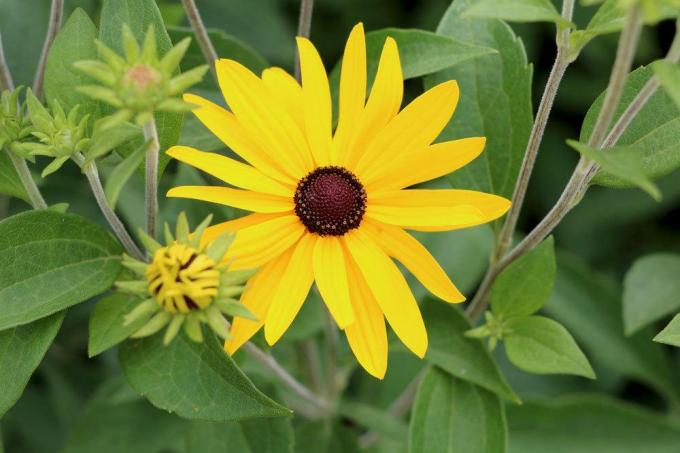
Perennials from K - V
Carthusian Carnation
- Synonym: stone carnation
- botanical name: Dianthus carthusianorum subsp.
- Growth height: up to about 40 cm
- preferred location: sunny, preferably dry and gritty-sandy
- Flower: purple
- Flowering period: June to September
- Leaves: narrow
- Special features: loves lime
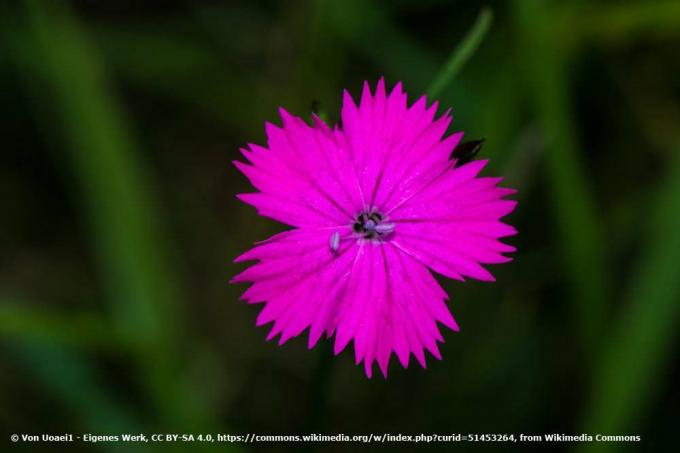
CandlePalm lily
- Synonyms: yucca, yucca lily
- botanical name: Yucca gloriosa
- Height: 50 cm to 2.5 m
- preferred location:
- Blossom: up to over a meter long paniculate inflorescence, bell-shaped, fragrant flowers, white to cream-colored, diameter up to 3.5 cm
- Flowering time: autumn
- Leaves: sword-shaped, blue-gray to gray-green, edge smooth to slightly serrated, sharp point
- Special features: only forms a trunk very late, previously only a basal rosette of leaves, sensitive to moisture, only partially hardy, but extravagant hillside planting

Cranesbill
- Synonyms: Schnabelkraut, Kranischschnabel
- botanical name: Geranium
- Height: 15 cm to 1 m depending on the variety
- preferred location:
- Flower: white, pink, red, blue or purple
- Flowering time: depending on the variety between May and November
- Leaves: red or yellow autumn colors depending on the variety
- Special features: extremely easy to care for, fast growing, aromatic leaves

Steppe sage
- botanical name: Salvia nemorosa
- Height: 30 to 60 cm
- preferred location: sunny
- Flowers: white, pink, blue or violet, single flowers arranged like spikes
- Flowering period: June to September, twice a year
- Leaves: lanceolate, serrated leaves, covered with fine, short hairs, down-to-earth rosette
- Special features: loves lime, very undemanding, holds the soil firmly because of meter-long roots
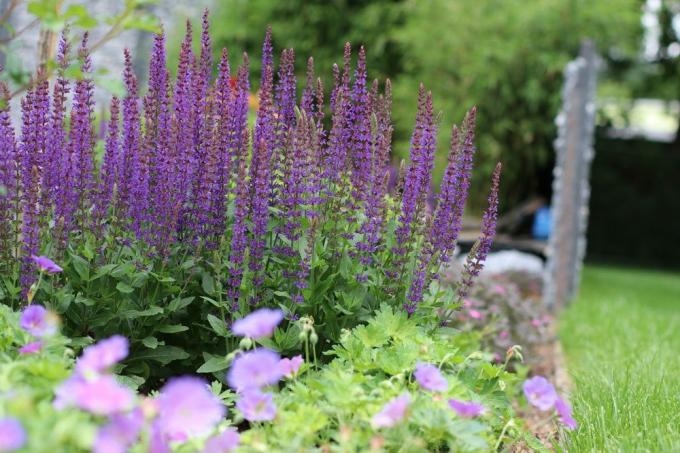
Multi-leaved lupine
- Synonym: herbaceous lupine
- botanical name: Lupinus polyphyllus
- Height: 60 cm to 1.5 m
- preferred location: sunny and open
- Blossom: from the second year onwards, up to 50 cm long racemose inflorescence with 50 to 80 individual flowers in numerous color variants, also multi-colored
- Flowering period: (end) May to August
- Leaves: alternate, pinnate leaf blades with 9 to 17 lanceolate, pointed leaves
- Special features: forms rhizomes, poisonous, also grows on poor soils, particularly easy to care for, great cut flower
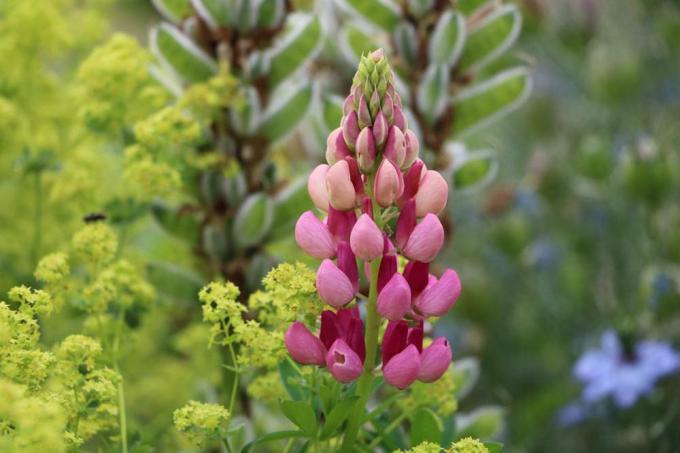
Bushes and trees on the slope
The steeper your hanging bed, the smaller the plants should be on it. In addition, trees need quite a large area both to grow and to have a good effect. Shrubs can often be integrated well if the embankment is large enough overall and the slope is not too steep.
Bushes from B - G
Broom
- botanical name: Cytisus scoparium
- Height: 1 to 2 m
- preferred location: preferably in full sun
- Flower: mostly yellow, but new varieties also come in white, yellow-red, orange-brown, red or pink
- Flowering period: May to June
- Leaves: lanceolate, threefold
- Special features: poisonous, deep roots, sensitive to lime, broad-growing or creeping forms, ideal for hillside planting

Finger bush
- botanical name: Potentilla fruticosa
- Growth height: depending on the variety, about 50 cm to approx. 1.5 m
- preferred location: full sun
- Flowering period: June to October
- Flowering time: simple cup flowers, for example in white, yellow, orange, red or pink
- Leaves: elongated, pinnate, 3- to 7-fold
- Special features: cut regularly, otherwise it will bald and tolerate drought
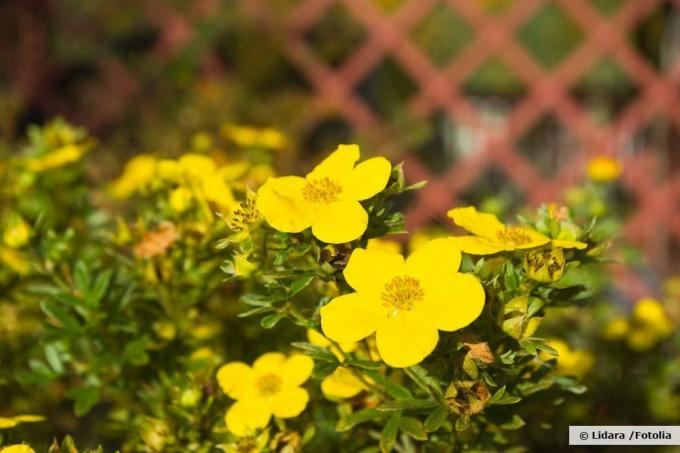
More common Pipe bush
- Synonym: false jasmine
- botanical name: Philadelphus coronarius
- Height: 2 to 3 m
- Preferred location: sunny to partially shaded, sandy to loamy soil
- Blossom: white to cream-colored, strongly fragrant
- Flowering period: May to June
- Leaves: ovate to (pointed) oval, serrate edge
- Special features: attracts aphids, strong roots and good root penetration

Shrubs from R - Z
Red dogwood
- botanical name: Cornus sanguinea
- Height: about 3 to 4 m
- Preferred location: sunny to partially shaded, with stony / gravel / loamy soil
- Flower: white panicles
- Flowering period: May to June
- Leaves: ovate, pointed, 4 to 8 cm long, dark green, then bright red in autumn
- Special features: robust and easy to care for, dense and bushy, red bark, therefore also decorative in winter
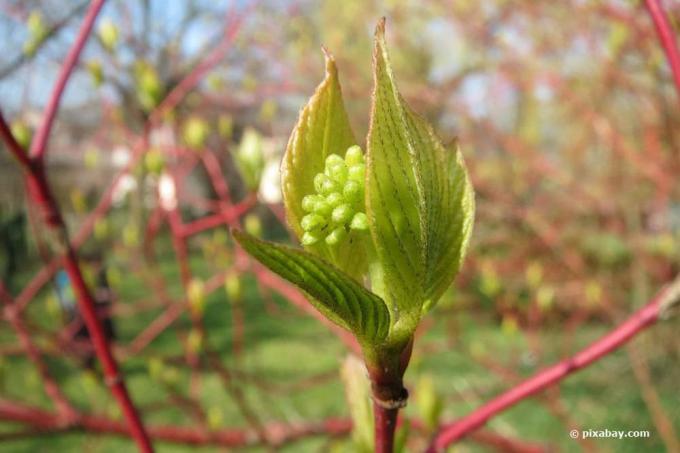
Buddleia
- Synonym: butterfly lilac
- botanical name: Buddleja
- Growth height: depending on the variety, 1.5 m to 4 m
- preferred location: sunny to partially shaded
- Flowers: from white to pink and rose-red to dark purple, depending on the variety
- Flowering period: from July until the first frost
- Leaves: narrow and elongated, gray-green with gray-tomentose underside
- Special features: cut regularly, copes with almost any soil, attracts butterflies

Tamarisk juniper
- botanical name: Juniperus sabina "Tamariscifolia"
- Height: approx. 80 cm
- preferred location: sunny
- Flower: inconspicuous
- Flowering period: June to July
- Leaves: needle-like, pointed, short
- Special features: growing shallow, deep roots, also very frost hardy
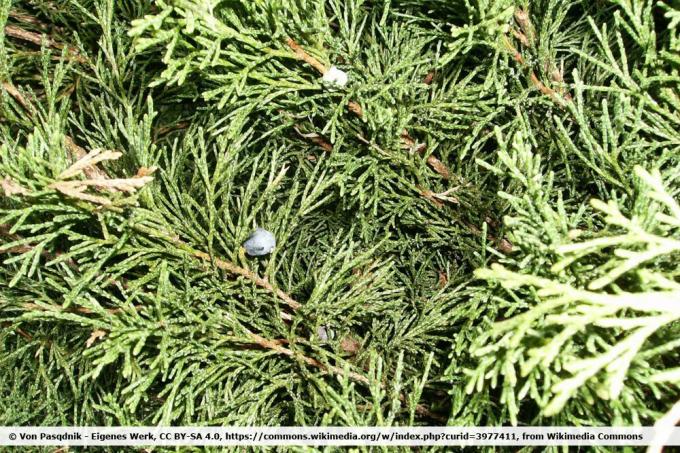
Ornamental quince
- Synonym: quince quince
- botanical name: Chaenomeles
- Height: up to 1.5 m
- preferred location: sunny to partially shaded
- Flower: white pink or orange
- Flowering period: from mid-March
- Special features: sparse growth and thorny shoots, but needs a lot of water in a sunny location, edible fruits
